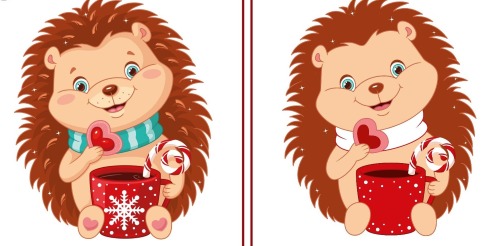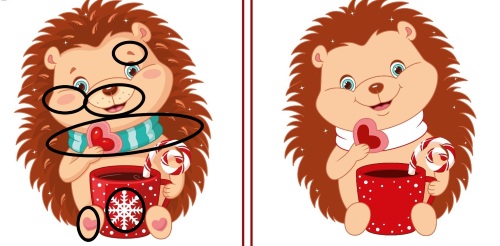As we occupy ourselves with constant information, engaging in different puzzles can help boost our attention span as well as increase our IQ levels.
If you love puzzles that challenge your attention to detail, then "spot the difference" games are perfect for you!
These puzzles welcome you to an exhilarating world where your keen eye and sharp focus take centre stage!
These classic puzzles test your ability to notice subtle changes between two similar images. They’re fun, brain-boosting, and a great way to unwind while staying mentally sharp.
These puzzles present you with two identical images however upon closer inspection you determine that the pictures have subtle differences between them.
In today’s Spot the Difference challenge, we’ve got two seemingly identical images—but don’t be fooled!
Hidden within these pictures are a set of subtle changes, designed to push your attention to detail to its limits. Your challenge is to find 6 hidden differences.
Think you’re up for the task? These puzzles aren’t just fun; they’re a fantastic way to give your brain a quick workout, improve your concentration, and sharpen your observation skills.
Whether you’re a seasoned puzzle enthusiast or a first-time explorer of these games, this challenge promises a thrilling ride!
But here’s the twist: Time is ticking! You only have 11 seconds to spot all the differences. Can you rise to the occasion and beat the clock?
This is your chance to prove just how sharp-eyed you are.
So, take a deep breath, focus your eyes, and dive right in. Remember, some differences are sneaky—they’ll hide in the smallest details, while others will jump right out at you.
Will you find them all before time runs out? There’s only one way to find out!
Try: Spot the Difference: Think Your IQ Is High Enough? Try to Spot the 6 Differences in This Puzzle
Spot the Difference: Find 6 Differences in 11 Seconds

Source: oxymaxplayroom.com
So, how many differences have you spotted so far?
Are you beating the clock or just trying to gather focus?
Why Are "Spot the Difference" Puzzles So Beloved?
"Spot the Difference" puzzles have stood the test of time, captivating people of all ages for decades. But what makes them so enduringly popular?
It’s their perfect blend of simplicity, challenge, and fun that keeps players coming back for more. Here’s why these puzzles are a favourite pastime for so many:
- Easy to Learn, Hard to Master: The concept is straightforward—find the differences between two images. Yet, the task can be delightfully tricky, offering just the right level of challenge to keep you engaged.
- Fun for All Ages: From kids to adults, everyone can enjoy the thrill of spotting subtle changes. Whether it’s a family game night, a classroom activity, or a solo brain teaser, these puzzles bring people together while providing hours of entertainment.
- Relaxing Yet Stimulating: Engaging with "Spot the Difference" puzzles requires focus, which helps clear your mind and reduce stress. It’s like a mini meditation session that simultaneously sharpens your attention to detail.
- Convenient and Accessible: With countless puzzles available online and in printable formats, you can take the fun with you anywhere. Whether you’re at home, commuting, or waiting for an appointment, they’re the perfect portable pastime.
In a fast-paced world, "Spot the Difference" puzzles offer a moment of mindful escape while keeping your brain sharp. It’s no wonder they’ve remained a timeless favourite!
Now, hurry up! The time limit is about to be over soon!
Uh-oh, time’s up!
So, how many differences did you manage to find?
If you spotted all of them, congratulations! Your keen eye has paid off.
If your count is under three, don’t worry—keep going! Scroll back to the top and take your time to finish the puzzle without the pressure of a timer.
Here’s the solution to the puzzle.
Find 6 Differences in 11 Seconds: Solution

Source: oxymaxplayroom.com
Hope you enjoyed this amazing puzzle. Try your skills with other puzzles and you will surely emerge as a true puzzle master.
Comments
All Comments (0)
Join the conversation